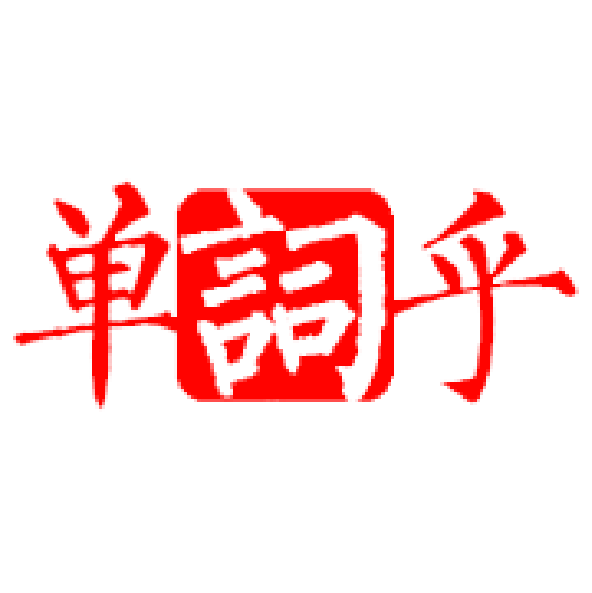orange
orange汉语翻译
a. 橘色的
【化】 II二号橙
【医】 橙[色], 橙黄, 桔黄, 橙, 柑
【经】 橘类
orange英语解释
名词 orange:
- round yellow to orange fruit of any of several citrus trees
- orange color or pigment; any of a range of colors between red and yellow同义词:orangeness
- any citrus tree bearing oranges同义词:orange tree
- any pigment producing the orange color
- a river in South Africa that flows generally westward to the Atlantic Ocean同义词:Orange River
形容词 orange:
- of the color between red and yellow; similar to the color of a ripe orange同义词:orangish
orange例句
- The waiter brought us a dish of orange segments.服务员给我们端来一盘掰开的橘子瓣。
- He gave me an apple in exchange of an orange.他给我一个苹果,交换一个橙子。
- Which one do you prefer, an apple or an orange?你想要哪个,苹果还是橘子?
- Would you peel me an orange?你给我剥一个橘子好吗?
- The burning coals started to flame yellow and orange.燃烧著的煤开始发出了黄色与橙色的火焰。
- There are some oranges on the table.桌子上有几个橘子。
orange详细解释
or.ange
n.(名词)
Any of several southeast Asian evergreen trees of the genusCitrus, widely cultivated in warm regions and having fragrant white flowers and round fruit with a yellowish or reddish rind and a sectioned, pulpy interior, especially C. sinensis, the sweet orange, and C. aurantium, the Seville or sour orange. 柑桔:一种东南亚柑属 常绿乔木,广泛种植于温暖地区,长有带香味的白色的花、果皮为红色或黄色的圆形果实和多汁的果肉,尤指 甜橙 和 酸橙 The fruit of any of these trees, having a sweetish, acidic juice.橘:这些树的带有甜酸汁水的果实Any of several similar plants, such as the Osage orange and the mock orange.柘橙,山梅花:相似的植物,如柘橙和山梅花Color The hue of that portion of the visible spectrum lying between red and yellow, evoked in the human observer by radiant energy with wavelengths of approximately 590 to '30 nanometers; any of a group of colors between red and yellow in hue, of medium lightness and moderate saturation.【色彩】 橙色,橘黄色:可见光谱中介于和黄色之间的那一部分色彩,该部分色彩通过波长在约590—'30毫微米之间的辐射线可被人眼观察;几组在色彩上介于红色和黄色之间的颜色,该颜色中等明亮且中度饱和
来源:Middle English 中古英语 from Old French pume orenge 源自 古法语 pume orenge translation and alteration influenced by Orenge [Orange, a town in France] 受 奥兰治 [奥兰治,法国一城镇] of Old Italian melarancio 古意大利语 melarancio的翻译和变化 mela [fruit] mela [果实] arancio [orange tree] alteration of Arabic n3ranj from Persian n3rang from Sanskrit n3raògaô [possibly of Dravidian origin] arancio [桔树] 阿拉伯语 n3ranj的变化 源自 波斯语 n3rang 源自 梵文 n3raògaô [可能源于达罗毗茶]
【引伸】
or.ange
adj.(形容词)<注释>Oranges imported to China from the United States reflect a journey come full circle,for the orange had worked its way westward for centuries, originating in China,then being introduced to India,and traveling on to the Middle East, into Europe,and finally to the New World.The history of the wordorange keeps step with this journey only part of the way. The word is possibly ultimately of Dravidian origin, that is, it comes from a language or languages in a large non-Indo-European family of languages,including Tamil and Telugu, that are spoken in southern India and northern Sri Lanka.The Dravidian word or words were adopted into the Indo-European language Sanskritwith the formn3raògaô. As the fruit passed westward,so did the word,as evidenced by Persiann3rang and Arabic n3ranj. Arabs brought the first oranges to Spain,and the fruit rapidly spread throughout Europe.The important word for the development of our term is Old Italianmelarancio, derived from mela, .fruit,. and arancio, .orange tree,. from Arabicn3ranj. Old Italianmelarancio was translated into Old French as pume orenge, theo replacing the a because of the influence of the name of the town of Orange, from which oranges reached the northern part of France.The final stage of the odyssey of the word was its borrowing into English from the Old French formorenge. Our word is first recorded in Middle English in a text probably composed around 380,a time preceding the arrival of the orange in the New World.从美国进口到中国的桔子恰恰反映出兜圈子似的行进里程,因为原产于中国的桔子几个世纪以来不断向西行进,先是被引入印度,之后传播到中东国家、欧洲,最后引进了新大陆,orange 这个词的发展历史只与桔子的发展历程在一部分时段上是有其同步性的, 它最可能是来源于达罗毗荼,也就是说,它来源于非印一欧语系中的一种或多种语言,包括用于印度南部和斯里兰卡北部的泰米尔语和泰卢固语。达罗毗荼语是以梵文形式引入印欧语系的,形式如narangch。 当这种水果向西传播时,这个单词也同样西传,从以下可得到明证,如波斯语中的narang 和阿拉伯语中的 naranj。 阿拉伯人把第一批桔子带到西班牙后,这种水果又迅速传遍整个欧洲。我们现时所用的这个词的发展期中重要的一词便是古意大利语melarancio ,源于 mela, .水果.及 arancio, .桔树., 来源于阿拉伯语naranj。 古意大利语melarancio 翻译成古法语为 pume orenge, o 变换为 a 是因为受奥伦奇城名的影响, 桔子即由此地进入法国北部。这一单词长途跋涉的最后一站是它由古法语orenge 进入英语词汇。 我们所用的这一词汇最初载入中世纪英语是在大约380年左右的一份文本当中,早于桔子进入新大陆的时间



















